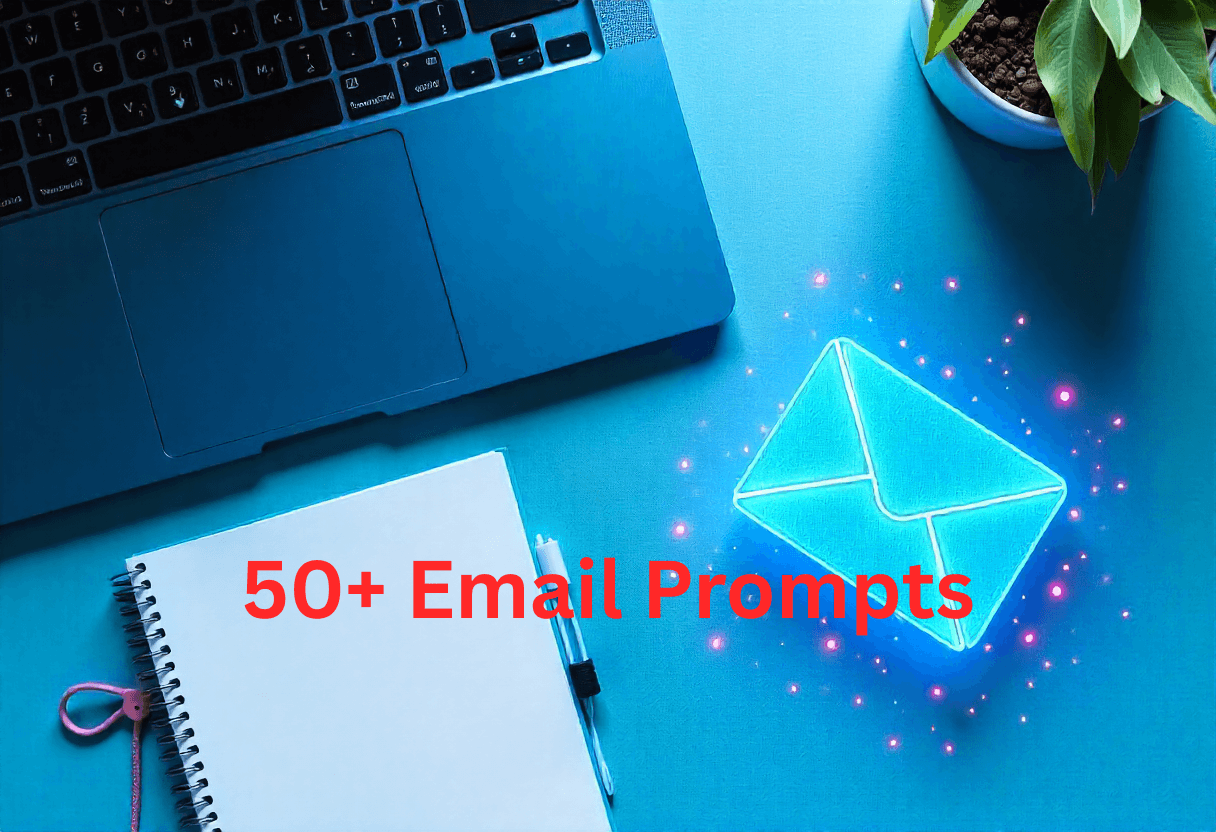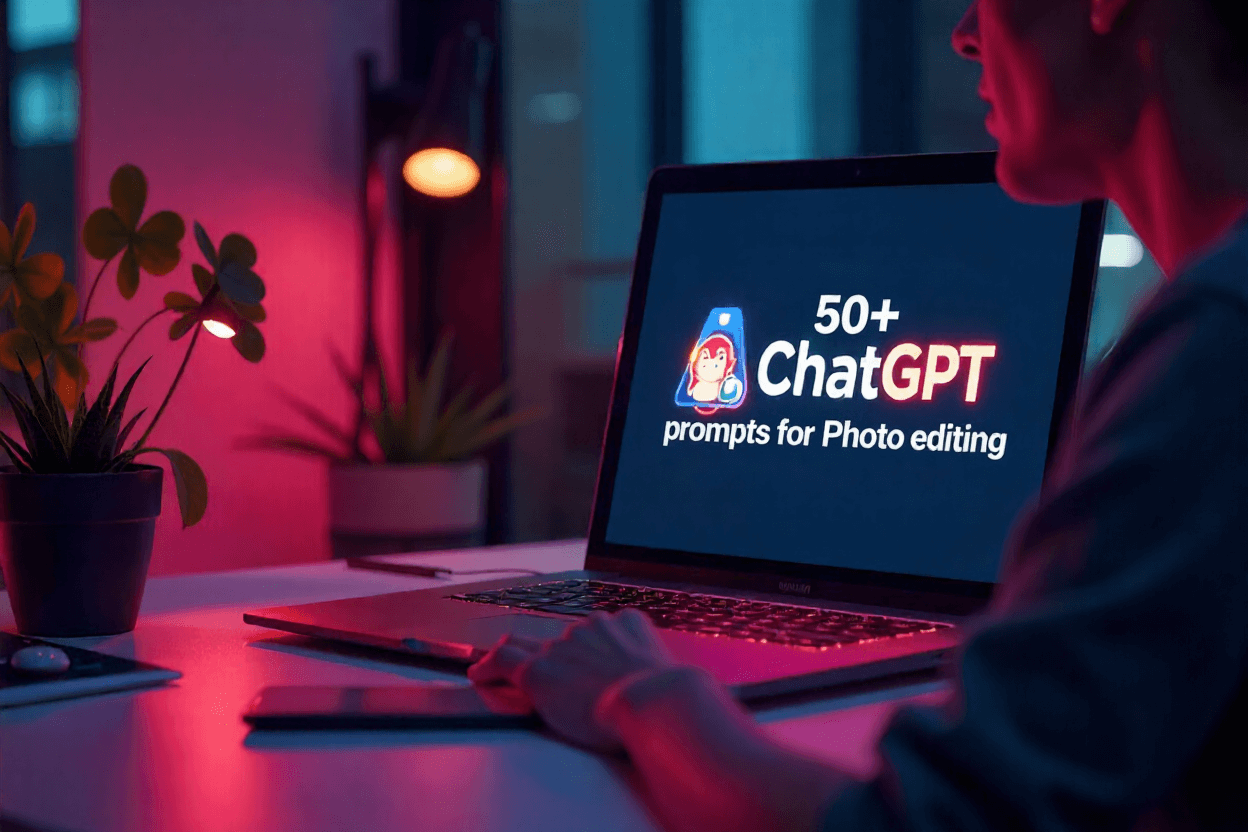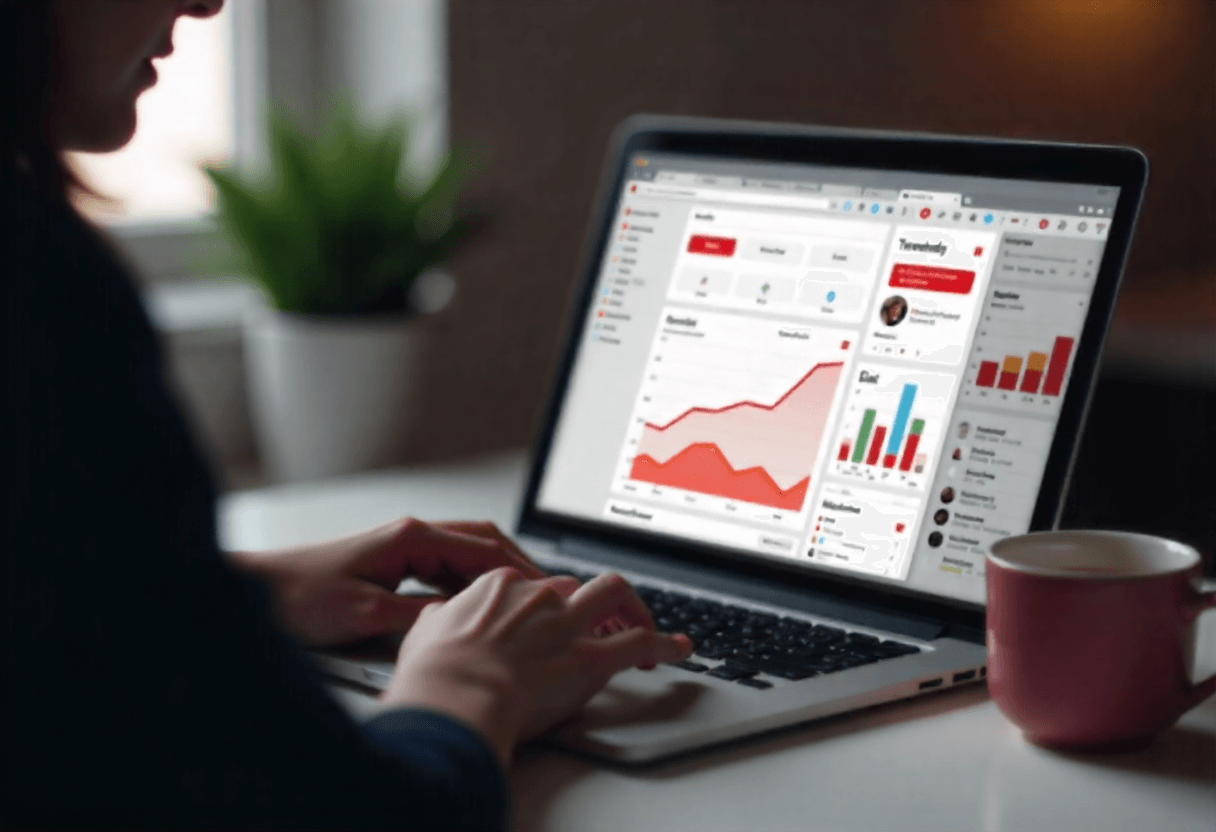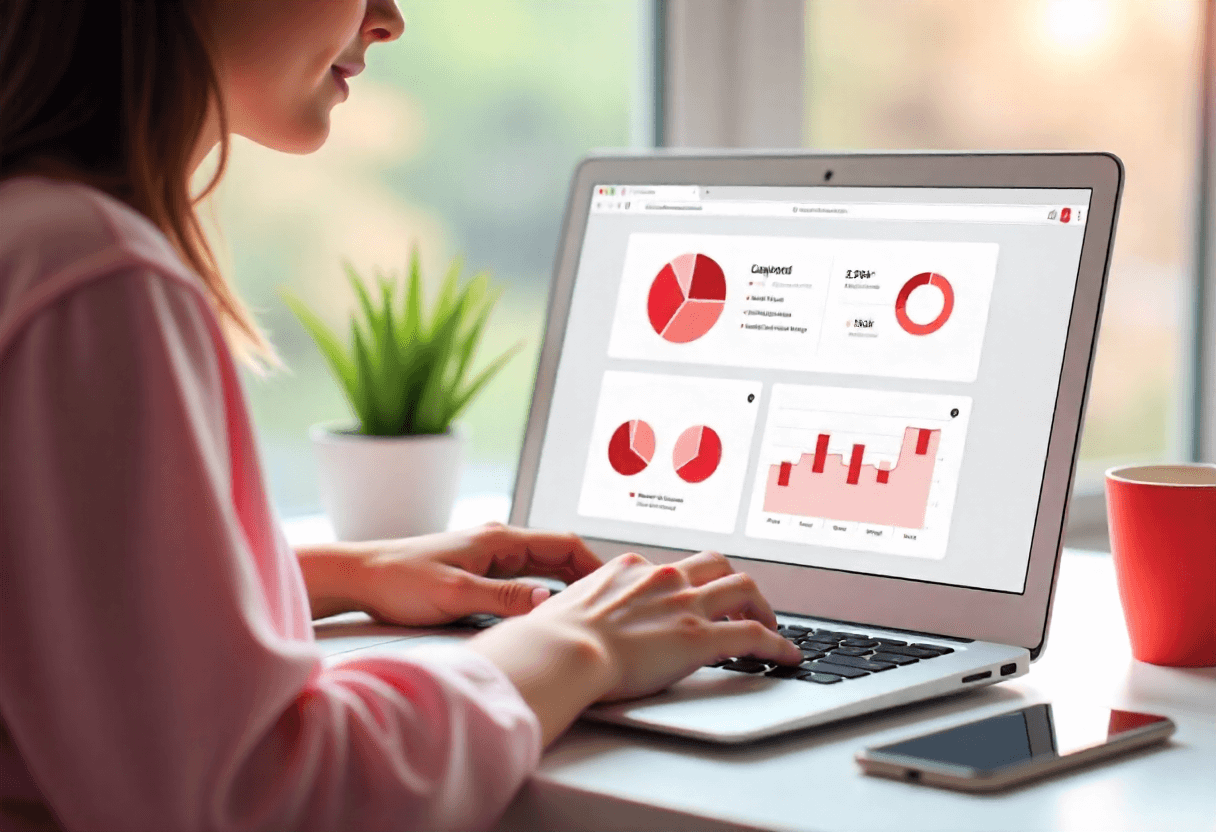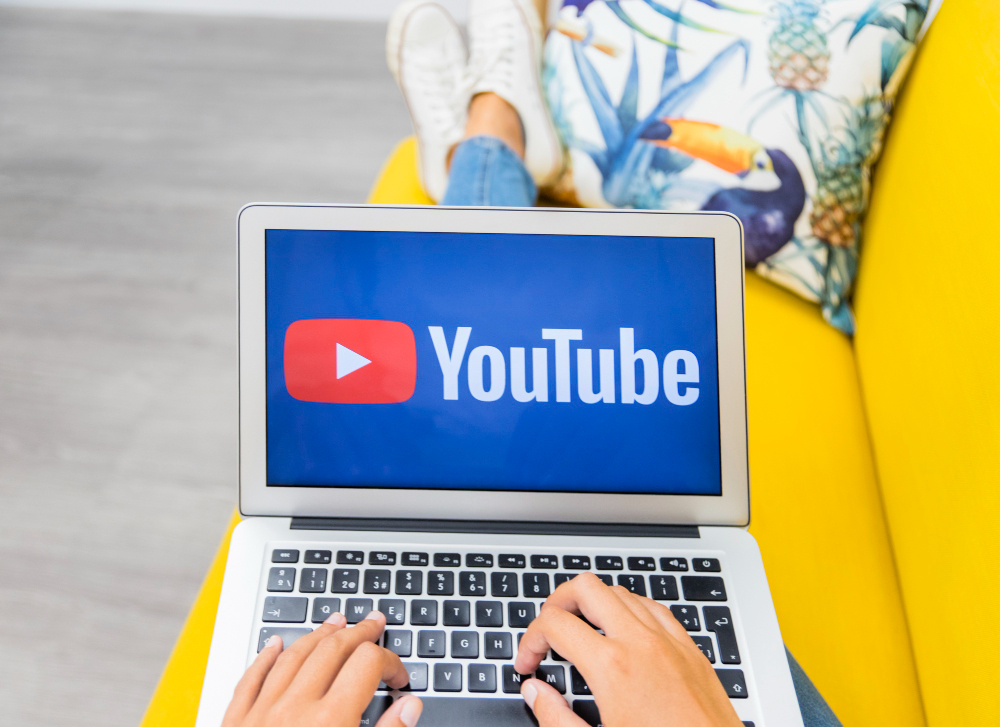
In today’s digital world, video is no longer just “nice to have” — it’s essential. Whether you’re a small business owner, a solo creator, or a marketing team inside a growing brand, YouTube is one of the most powerful tools you can use to attract, engage, and convert your target audience.
But here’s the hard truth: simply uploading videos to YouTube doesn’t guarantee success.
There are over 500 hours of video uploaded every minute on YouTube. Without a clear and well-thought-out plan, your content is just another drop in a massive ocean of videos.
That’s where a YouTube marketing plan comes in.
A YouTube marketing plan is your step-by-step roadmap. It tells you:
- Who you’re creating content for
- What types of videos you should make
- How often you should post
- How to promote your videos
- And how to measure whether it’s all working
Without a plan, most creators and businesses end up wasting time, money, and energy making videos that no one sees — or worse, making videos that attract the wrong audience altogether.
🚀 What You’ll Get from This Guide
This blog is a complete, beginner-friendly walkthrough to help you create a YouTube marketing plan from scratch — even if you’ve never done video marketing before.
Inside this guide, you’ll learn:
✅ How to define your ideal audience
✅ What type of content will work best for your goals
✅ How to plan a video content calendar
✅ How to optimize your videos for YouTube’s search algorithm
✅ How to use YouTube Analytics to improve over time
✅ Common mistakes that can kill your growth
✅ And much more!
We’ll break everything down into simple, easy-to-follow steps so you can stop guessing and start growing.
📌 Don’t Know Where to Start?
If you’re brand new to YouTube or still exploring how it works, start with our beginner’s guide here: 👉 YouTube Marketing Strategies: Building a Successful Channel
That guide will give you a solid overview of how YouTube works, and this current blog will take you even deeper — helping you build a plan that actually delivers results.
🧭 What Is a YouTube Marketing Plan and Why Do You Need One?
A YouTube marketing plan is a detailed roadmap that outlines what kind of content you’ll create, who it’s for, how often you’ll publish, and how you’ll promote it — all with the goal of growing your channel and achieving real business or personal branding results.
Think of it like this:
Just like you wouldn’t open a store without a business plan, you shouldn’t launch (or grow) a YouTube channel without a marketing plan.
Many creators and businesses make the mistake of just uploading videos at random — without clear goals, consistency, or targeting. The result? Low views, no engagement, and wasted effort.
That’s because YouTube is a search engine, just like Google. It rewards channels that consistently post useful content targeted at the right audience. A plan helps you align your video content with what your audience is searching for.
🎯 Why Having a Plan Is Better Than “Just Posting Videos”
Let’s break it down in simple terms:
| Without a Plan | With a YouTube Marketing Plan |
|---|---|
| Random topics based on guesswork | Content aligned with keyword research and audience intent |
| Inconsistent posting | Clear publishing schedule for regular uploads |
| No clear goals or tracking | Defined goals (e.g., subscribers, leads, sales) and performance tracking |
| Little to no growth | Gradual and measurable channel growth |
✅ What a Good YouTube Marketing Plan Includes:
Here’s a quick list of what a strong YouTube marketing plan typically covers:
- 🎯 Target Audience – Who you’re creating videos for
- 🧠 Content Strategy – What topics and formats you’ll focus on
- 📅 Content Calendar – How often you’ll upload and plan ahead
- 🔍 Video SEO – How you’ll optimize your titles, tags, and thumbnails
- 📈 Promotion Plan – How you’ll share your videos (social media, email, etc.)
- 📊 Analytics and Improvement – How you’ll measure success and adjust
- 💬 Engagement Strategy – How you’ll interact with your audience (comments, community tab, etc.)
🎯 Who Are You Creating Videos For?
Before you hit record or plan a single topic, you need to answer one very important question:
“Who am I making these videos for?”
This is the foundation of any successful YouTube marketing plan.
Many creators skip this step — and end up talking to everyone, which usually means they connect with no one. But when you clearly define your target audience, your content becomes more focused, more relevant, and more likely to turn views into subscribers, leads, and loyal fans.
🔍 Why Knowing Your Audience Is So Important
When you know exactly who you’re talking to, you can:
- Choose topics that solve their problems
- Use language and tone they relate to
- Design thumbnails and titles that speak to them directly
- Keep them engaged longer, which helps with the YouTube algorithm
- Build a stronger, more connected community over time
It’s not just about demographics — it’s about intent, pain points, and goals.
—
📊 Use Data to Discover Your Ideal Viewer
If you already have a YouTube channel with some videos, you can start by looking inside YouTube Analytics. Here’s what to check:
👥 YouTube Analytics (under the “Audience” tab):
- Top geographies – Where your viewers are located
- Age & gender – Which age groups and genders watch most
- When your viewers are online – Best times to publish
- Other channels they watch – See who else they follow for ideas
🔎 Use These Tools for Audience Research (Even If You’re Just Starting)
If you’re launching a new channel or have very little data yet, try these free tools:
1. Google Trends
- Search for topics like “how to grow on YouTube” or “YouTube marketing for small business”.
- Compare interest over time and by region.
👉 https://trends.google.com
2. AnswerThePublic
- Discover real questions people are asking around your topic.
- Example: Type “YouTube marketing” and it will show queries like:
“how does YouTube marketing help small businesses?”
👉 https://answerthepublic.com
3. Reddit & Quora
- Browse threads in subreddits like
r/youtube,r/entrepreneur, orr/marketing.
- Look at the problems and questions users post about video marketing, content creation, or YouTube growth.
🧍♂️ Create a Simple Viewer Persona
Here’s a basic template to help you define your ideal viewer. You can even create more than one persona if your content serves multiple groups.
📌 Example: YouTube Viewer Persona Template
| Field | Example |
|---|---|
| Name | Startup Sam |
| Age | 28–35 |
| Location | Urban areas in India, US, UK |
| Occupation | Startup founder or small business owner |
| Goals | Wants to grow brand visibility on YouTube |
| Pain Points | Doesn’t know what type of videos to create, struggles with consistency |
| What They Search | “How to market my business on YouTube”, “YouTube content plan for business” |
| Channels They Follow | Neil Patel, Think Media, HubSpot, etc. |
🧠 Pro Tip:
Once you define your audience, use that persona every time you write a script or brainstorm a new video. Ask: “Would Startup Sam care about this video? Would it help him?” That mindset will keep your content focused and useful.
What Content Should You Include in Your YouTube Strategy?
Once you’ve identified who you’re creating content for, the next step is figuring out what kind of content will actually attract and keep their attention.
YouTube is a platform built around diverse video formats — and the most successful creators don’t rely on just one type. Instead, they mix content types that serve different goals: educating, entertaining, inspiring, or building trust.
🎬 Common Types of YouTube Content (With Examples)
Let’s walk through the most effective content formats you can include in your YouTube marketing plan:
📘 1. Tutorials / How-To Videos
Purpose: Educate your audience and solve specific problems.
These are some of the most searched videos on YouTube. Whether it’s “how to create a YouTube thumbnail” or “how to set up Facebook ads”, people go to YouTube to learn.
Example: 👉 Think Media teaches creators how to grow on YouTube with tutorials on cameras, microphones, and YouTube tools. 👉 Neil Patel explains SEO and marketing concepts in step-by-step tutorials.
Use it when: Your audience is beginners or looking to learn a new skill.
⭐ 2. Product Reviews / Comparisons
Purpose: Help your audience make informed decisions.
If your channel covers tools, gear, apps, or software — reviews are a great way to gain trust and build authority. These can also help you rank for product keywords and earn affiliate income.
Example: 👉 Marques Brownlee (MKBHD) built a brand on high-quality tech reviews. 👉 HubSpot reviews marketing tools and software in comparison videos.
Use it when: Your audience is searching “best tool for [X]” or comparing solutions before buying.
🎥 3. Vlogs / Day-in-the-Life Content
Purpose: Humanize your brand and connect emotionally.
This type of content shows the behind-the-scenes of your business, brand, or personal journey. It builds a more personal connection with your audience.
Example: 👉 Ali Abdaal mixes productivity advice with vlogs from his daily work and life. 👉 GaryVee uses behind-the-scenes vlogs to showcase his hustle and leadership style.
Use it when: You want to build trust, personality, and authenticity around your brand.
🛠️ 4. Behind-the-Scenes (BTS) / Process Videos
Purpose: Show transparency and build authority.
People love seeing how things are made, how decisions are made, or how problems are solved. Whether you run an agency, design products, or run a YouTube channel — showing the “how” behind your work builds trust and credibility.
Example: 👉 Pat Flynn shares behind-the-scenes of launching products, podcasts, and courses. 👉 Piximperfect (a photo editing channel) shares his editing process in detail.
Use it when: You want to build authority by showing your expertise, not just talking about it.
💬 5. Testimonials / Case Studies
Purpose: Build social proof and drive conversions.
If you sell services, products, or even offer courses, testimonial videos or customer case studies can help convince others that you can solve their problem.
Example: 👉 ClickFunnels shares customer success stories to build trust in their platform. 👉 Ahrefs posts case studies of how their SEO tool helped websites grow traffic.
Use it when: You’re targeting viewers in the MOFU or BOFU stages — they’re ready to take action but need proof.
🎯 Aligning Content with Audience Intent
Here’s a simple chart to help you match content type to viewer intent:
| Viewer Intent | Best Video Types |
|---|---|
| Learn something new | Tutorials, how-to guides |
| Compare options | Reviews, comparisons |
| Get inspired or relate | Vlogs, BTS, founder stories |
| Take action or buy | Testimonials, case studies |
🔧 Pro Tip: Mix Content Types in a Monthly Schedule
Here’s a simple example for a YouTube marketing channel:
| Week | Video Type | Example Title |
|---|---|---|
| Week 1 | Tutorial | “How to Write a YouTube Video Script that Converts” |
| Week 2 | Review | “Best YouTube Tools in 2025 (Free & Paid)” |
| Week 3 | Behind the Scenes | “How We Plan and Shoot 4 YouTube Videos in a Day” |
| Week 4 | Case Study | “How One Client Got 10,000 Subs in 3 Months With This Strategy” |
This keeps your content fresh, helpful, and strategically aligned with your audience’s journey.
🗓️ How Do You Plan Your YouTube Content Calendar?
Creating amazing videos is only half the battle — the other half is planning when to publish them. A smart YouTube content calendar helps you stay consistent, avoid burnout, and post content your audience actually wants when they want it.
Whether you’re a solo creator or part of a team, having a content calendar removes guesswork, keeps you organized, and ensures you’re always a few steps ahead.
📅 Why a YouTube Content Calendar Is Essential
A content calendar gives you:
- A bird’s-eye view of your upcoming videos
- A system to stay consistent with uploads
- Time to plan video topics in advance (no last-minute stress!)
- Flexibility to fit in trending topics or last-minute ideas
- The ability to spot gaps in your strategy or overused formats
📆 Weekly vs Monthly Planning: Which Is Better?
The best strategy depends on your schedule and resources, but here’s a simple rule:
🔁 Consistency is more important than frequency.
If you can only post one high-quality video per week, that’s better than pushing out 3 rushed ones. YouTube’s algorithm favors channels that post regularly over time, even if it’s just once a week.
Here’s a simple format to follow:
| Posting Frequency | Ideal For |
|---|---|
| 1 video/week | Solo creators, small businesses |
| 2 videos/week | Growing brands, teams with support |
| 3+ videos/week | Large content teams or full-time YouTubers |
Pro Tip: Start with 1 high-quality video per week and build up from there once you have a solid system in place.
🧰 Tools to Create and Manage Your Calendar
Choose whatever you’re comfortable with — the key is to have something visual and trackable.
🟢 Trello (Free Kanban Board)
- Drag-and-drop format
- Create cards for each video: script, shoot, edit, publish
👉 https://trello.com
🟣 Notion (Customizable Workspace)
- Fully customizable
- Can combine your content calendar, scripts, and keyword research
👉 https://notion.so
🟡 Google Sheets (Simple & Shareable)
- Easy to use and share with a team
- Can include columns for: Title, Status, Target Keyword, Upload Date, Notes
👉 https://sheets.google.com
🧠 What to Include in Your Calendar
- 🎯 Video Title / Topic
- 🔑 Focus Keyword
- 📅 Publish Date
- 📝 Script Status (Idea / Draft / Final)
- 🎬 Filming Date
- 🧑🎨 Editor Assigned (if working in a team)
- ✅ Upload Status (Scheduled / Published)
This helps you track the full production cycle and avoid missed deadlines.
🌟 Incorporate Seasonal Content & Trend Jacking
A great way to get extra views and visibility is by planning videos around seasonal events or trending topics — also called “trend jacking.”
📅 Examples of Seasonal Content:
| Month | Seasonal Opportunity |
|---|---|
| January | “Marketing Trends for the New Year” |
| April | “YouTube Tips for Spring Product Launches” |
| July | “Summer YouTube Campaign Ideas” |
| November | “Black Friday YouTube Ad Strategy” |
| December | “Year in Review: YouTube Growth Analytics” |
📈 How to Spot Trends:
- Use Google Trends to track what’s gaining interest
- Check YouTube’s Trending tab for hot topics
- Monitor your niche on Twitter/X, Reddit, or Instagram Reels
- Follow competitor channels to see what topics are heating up
Example: If “AI tools for creators” is trending, you could create: 🧠 “5 AI Tools to Supercharge Your YouTube Content in 2025”
✅ Quick Template (Example Calendar View):
| Date | Video Title | Keyword | Status | Notes |
|---|---|---|---|---|
| July 5 | How to Write Video Scripts | video script for YouTube | Filming | Linked to main YT strategy blog |
| July 12 | YouTube Shorts Strategy | grow with shorts | Drafting | Based on July trends |
| July 19 | Best AI Tools for YouTubers | AI for YouTube | Idea | Trending topic |
| July 26 | BTS: How We Shoot 4 Videos in a Day | behind-the-scenes YouTube | Ready | Weekly vlog style |
By planning ahead, mixing evergreen + trending content, and staying consistent, you build a sustainable system that helps your YouTube channel grow over time — even if you’re busy.
🔍 How Do You Optimize Your Videos for Visibility?
Creating valuable videos is important — but if no one finds them, they won’t grow your channel. That’s where YouTube SEO (Search Engine Optimization) comes in.
YouTube is the second-largest search engine in the world, owned by Google. To get more visibility on YouTube (and sometimes even on Google Search), you need to optimize every part of your video before and after uploading.
Let’s walk through the essentials — step by step.
🎯 Video SEO Essentials
These are the 5 key elements that directly affect whether your video gets found by search engines and viewers:
📝 1. Video Title
Your title should be clear, clickable, and include your target keyword. It’s the first thing people see — and YouTube uses it to understand what your video is about.
✅ Bad Example: “Another Video About YouTube” ✅ Good Example: “YouTube Marketing Plan: Step-by-Step Guide for Beginners”
Tips:
- Keep it under 60 characters
- Put your main keyword at the start
- Add emotional or benefit-driven hooks like:
“for beginners”, “step-by-step”, “no experience needed”, “in 2025”
🏷️ 2. Tags
Tags aren’t as powerful as they used to be, but they still help YouTube understand your video’s context.
✅ Add a mix of:
- Broad tags:
youtube marketing,content strategy
- Specific tags:
youtube plan for small business,how to grow on youtube 2025
Use tools like VidIQ or TubeBuddy to find the best-performing tags in your niche.
📄 3. Video Description
This is where you give YouTube and viewers more details. Use the first 2–3 lines to explain the main point of your video and include your keyword naturally.
Example Opening Line:
“In this video, we show you how to build a YouTube marketing plan that actually works in 2025.”
✅ Description tips:
- Include a short summary of the video
- Add links to related videos and blogs
- Use bullet points to make it easy to scan
- Add hashtags like
#YouTubeMarketingor#SmallBusinessTips
🖼️ 4. Thumbnail
Your thumbnail is the first visual impression — it should stop people from scrolling.
✅ Good thumbnail tips:
- Use bold text that matches your title
- Bright, contrasting colors
- Your face or expressive human emotion
- Clear visual cue of what the video is about (charts, icons, product image)
Example Tools to Create Thumbnails: Canva, Fotor, Adobe Express
💬 5. Captions / Subtitles
Adding closed captions helps viewers understand your video (especially in noisy environments or for non-native speakers), and it helps YouTube index your content better.
✅ Options:
- Upload your own SRT file
- Use YouTube’s auto-captioning, then edit it for accuracy
- Use tools like Descript, Veed.io, or Kapwing to auto-generate captions
🔗 Use Internal Linking via Playlists & Cards
Internal linking doesn’t only apply to blogs — you can also do it inside YouTube:
📂 Playlists
Group related videos together. Example:
- Playlist: YouTube for Beginners
- * Video 1: “What is a YouTube Marketing Plan?”
- * Video 2: “Best Tools for YouTube SEO”
- * Video 3: “How to Read YouTube Analytics”
This keeps users binge-watching your content and boosts your watch time — which helps your rankings.
🎴 Cards and End Screens
Cards = little pop-ups during your video that link to:
- Related videos
- Playlists
- Website (if you’re verified)
End Screens = clickable boxes that show up in the last 5–20 seconds of your video. Use them to recommend:
- Next video to watch
- Subscribe button
- Blog post or lead magnet (with proper linking setup)
🛠️ Keyword Research Tools (Beginner Friendly)
Use these tools to find the best keywords before you record:
- VidIQ – Chrome extension showing search volume, competition, trending keywords
👉 https://vidiq.com
- TubeBuddy – Tag explorer, SEO score, A/B testing
👉 https://www.tubebuddy.com
- Semrush or Ahrefs – Great for YouTube + Google search data
- Google Trends – Compare search interest over time
👉 https://trends.google.com
📌 Want More Help with YouTube SEO?
We’re working on a full guide just for beginners! 👉 Coming soon: YouTube Marketing Tips for Growing a New Channel (Stay tuned or to get it first!)
📈 How Can You Use YouTube Analytics to Refine Your Strategy?
Once your videos are live, your job isn’t done — in fact, this is where real growth begins. YouTube gives you powerful analytics to understand how your content is performing, what your audience likes (or doesn’t), and how you can improve future videos.
If you want your channel to grow faster, you need to learn from your data — not guess.
Let’s walk through the key metrics you should focus on, what they mean, and how to use them to adjust your strategy.
📊 Key Metrics to Track in YouTube Studio
You can access all of these under YouTube Studio → Analytics tab. Each metric tells a different story about how well your content connects with viewers.
⏱️ 1. Watch Time (in hours)
What it means: The total amount of time people have spent watching your videos.
✅ More watch time = better chance of YouTube recommending your videos.
How to improve it:
- Create longer videos with strong storytelling
- Use pattern interrupts (text popups, cuts, camera angles) to keep attention
- Hook viewers in the first 15 seconds
📌 2. Click-Through Rate (CTR)
What it means: The percentage of people who clicked on your video after seeing the thumbnail + title.
✅ A low CTR means people aren’t enticed to click. High CTR = your video looks interesting!
How to improve it:
- Test different thumbnail styles (bright colors, close-up faces, bold text)
- Use curiosity or value-driven titles (e.g. “Don’t Do THIS on YouTube”)
- A/B test using TubeBuddy or VidIQ
Good Benchmark: 3–10% is considered healthy. <3% = needs improvement.
🔁 3. Audience Retention
What it means: How long people stay on your video before dropping off.
You’ll see a graph that shows exactly where people lose interest — that’s gold!
How to improve it:
- Cut fluff in intros — get to the point fast
- Tease value early: “In this video, I’ll show you exactly how we got 10K views in 30 days”
- Use timestamps/chapters to help viewers navigate content
🧲 4. Subscribers Gained (per video)
What it means: How many people decided to subscribe after watching a video.
This tells you which content actually grows your community.
How to improve it:
- Add verbal CTAs: “If this helped, hit subscribe for more videos like this.”
- Show value quickly — don’t make them wait 5 minutes to understand what they’re watching
- Create series playlists so new subs have more to binge
🔁 Use These Insights to Adjust Your Strategy
Once you’ve gathered data from a few videos, take time each week or month to review your analytics and ask:
- Which videos got the most watch time?
- What thumbnails had the best CTR?
- Where are viewers dropping off in retention?
- Which topics led to more subscribers?
Now turn that data into action:
| If You Notice… | Then Try This: |
|---|---|
| Low CTR | Redesign your thumbnails or rewrite titles |
| High drop-off in first 30 sec | Shorten intros and show value earlier |
| Great performance from certain topic | Make more videos around that theme |
| Poor engagement overall | Revisit your viewer persona or try a new format |
⚗️ The Importance of Experimentation & Iteration
Even the best YouTubers didn’t “figure it all out” on day one.
The secret to long-term growth? Test → Learn → Improve → Repeat.
🎥 Try a new intro style. 🧪 Use a different thumbnail format for one month. 📝 Ask your audience what they want in community polls. 🎯 Test publishing on a new day or time.
Not every video will be a hit — and that’s okay. What matters is that you pay attention, adjust, and keep going.
By using YouTube Analytics to refine your content, you turn your channel into a smart machine — one that gets better with every video you publish.
⚠️ What Are the Common Mistakes in YouTube Marketing Plans?
Even with the best intentions, many creators and businesses make simple mistakes that hurt their growth on YouTube. The good news? These are easy to fix — once you know what to look for.
Below are the most common pitfalls in YouTube marketing plans, and what you can do to avoid them.
❌ 1. No Clear Audience
The mistake: Creating content for “everyone” or trying to copy what other channels are doing without knowing who your videos are really for.
Why it hurts: When your content lacks a defined target, it fails to connect with any specific group. This leads to low engagement, high drop-off rates, and fewer subscribers.
How to fix it: ✅ Define your viewer persona (e.g. “Startup Sam” or “Marketing Maya”) ✅ Ask yourself before every video: “Will this help my ideal viewer solve a problem or achieve a goal?” ✅ Speak directly to their needs in your video titles, intros, and content
❌ 2. No Content Consistency
The mistake: Uploading 3 videos one month, then nothing for two months. Or switching between completely unrelated content styles.
Why it hurts: The YouTube algorithm and your audience both love consistency. Inconsistent posting confuses your viewers and hurts channel growth.
How to fix it: ✅ Stick to a realistic schedule (even if it’s just 1 video/week) ✅ Create a content calendar (Trello, Notion, Google Sheets) ✅ Batch record videos in advance to stay ahead
❌ 3. Ignoring Data
The mistake: Never checking YouTube Analytics or uploading content based only on your gut feeling.
Why it hurts: You miss out on valuable insights that could tell you exactly what’s working (or what’s not).
How to fix it: ✅ Regularly review key metrics: Watch time, CTR, Retention, Subscribers ✅ Use the data to adjust your topics, thumbnails, and intros ✅ Don’t just upload — upload, measure, and improve
❌ 4. Poor Branding
The mistake: No recognizable logo, inconsistent thumbnails, no channel trailer, or random video styles that confuse new visitors.
Why it hurts: Strong branding builds trust and makes your channel look professional. Weak branding makes your channel forgettable.
How to fix it: ✅ Use consistent colors, fonts, and logo in your thumbnails ✅ Add a professional banner and trailer to your channel home page ✅ Stick to a tone of voice and visual style that matches your audience
❌ 5. Skipping Video SEO Basics
The mistake: Not optimizing video titles, descriptions, tags, or thumbnails. Forgetting to include target keywords.
Why it hurts: Even great videos can get buried on YouTube if they’re not optimized for search.
How to fix it: ✅ Do keyword research using tools like VidIQ, TubeBuddy, or Google Trends ✅ Add your target keyword in the title, description, and file name ✅ Create thumbnails that grab attention and match the video’s message ✅ Add captions and use playlists to improve discoverability
🔧 Quick Fix Checklist
Before publishing your next video, ask yourself:
✅ Do I know exactly who this video is for? ✅ Is it part of a content plan or just random? ✅ Have I reviewed my analytics to guide this topic? ✅ Does it look and feel like it belongs to my brand? ✅ Have I optimized the title, tags, description, and thumbnail?
If you answered “no” to any of the above — that’s your signal to adjust your plan. 😊
🔄 How Can You Integrate YouTube Into a Larger Marketing Funnel?
YouTube isn’t just a place to share videos — it’s a powerful marketing engine that can attract new people, build trust, and convert viewers into loyal customers or clients.
To unlock its full potential, you need to treat YouTube as more than a content platform — think of it as the entry point to your sales funnel.
Let’s break down how you can turn casual viewers into subscribers, leads, and eventually, paying customers.
🎯 YouTube as TOFU (Top of Funnel)
Most people discover you on YouTube when they’re just beginning their journey. They’re searching for:
- “How to market on YouTube”
- “YouTube content plan for small business”
- “YouTube SEO tips for beginners”
These viewers are in the awareness stage — they don’t know you yet, but they have a problem and your video is the first helpful step.
✅ Goal at this stage: Deliver free value and get them to take the next step (not sell yet).
🧲 Step 1: Offer a Lead Magnet in Your Video
A lead magnet is a free resource that solves a specific problem — in exchange for an email address.
🔹 Examples of lead magnets for YouTube creators:
- Free checklist: “YouTube Video Script Template”
- Quick guide: “30-Day YouTube Content Calendar”
- Free course or training: “How to Grow to 1,000 Subscribers”
- Toolkits or swipe files
🗣️ How to offer it: “Hey, if you found this helpful, I’ve put together a free 1-page YouTube Content Planner. You can download it — link’s in the description!”
📩 Step 2: Collect Emails via Landing Page
Use tools like:
- Systeme.io (free)
- Mailercloud (great for Indian users)
Direct your viewers to a simple landing page where they can grab your freebie and join your email list.
✅ Pro Tip: Make the lead magnet hyper-specific to the video they just watched.
💡 Step 3: Nurture With Emails
Once someone joins your list, don’t pitch them immediately. First, build trust with valuable emails.
A simple 5-email welcome sequence might look like this:
| Email # | Purpose |
|---|---|
| 1 | Deliver the freebie, thank them, set expectations |
| 2 | Share a personal story or behind-the-scenes content |
| 3 | Link to more helpful YouTube videos or blogs |
| 4 | Share a case study or success story |
| 5 | Make your offer (course, service, tool, etc.) |
💼 Step 4: Make the Offer
Now that they know, like, and trust you — it’s time to invite them to take action.
Your offer could be:
- A course
- A coaching program
- Your agency service
- A product (physical or digital)
- A consultation call
✅ Best practice: Tie your offer directly to the problem your video solved.
Example: If your video was about building a content calendar, your offer might be a done-for-you YouTube planning service.
🛠️ Tools You Can Use Inside YouTube to Support the Funnel
Here’s how to guide people from YouTube into your funnel:
🔗 Links in Description
Add links to your lead magnet, landing page, blog posts, and related resources.
Tip: Put the most important link in the first two lines — that’s what shows up without clicking “Show more.”
📌 Pinned Comments
Pin a comment under your own video with:
- A CTA: “Download your free YouTube Strategy Template”
- A direct link
- Bonus tip or reason to click
📺 End Screens & Cards
Use end screens to link to:
- Related video
- Playlist
- Website (if you’re approved in YouTube Partner Program)
Use cards (popups) to:
- Suggest related content
- Promote your free lead magnet
- Send viewers to a landing page
🧩 Example Funnel Flow: From Viewer to Client
Let’s say you post a video titled: 🎥 “How to Create a YouTube Marketing Plan in 2025”
Here’s how you build a full funnel from it:
- Video Title: “How to Create a YouTube Marketing Plan in 2025”
- In-Video CTA: “Download our free YouTube Content Planner”
- Description Link: [yourwebsite.com/planner]
- Landing Page: Collects email and delivers the planner
- Email Welcome Series: Builds relationship with value + videos
- Final Email Offer: “Want us to plan and manage your YouTube channel for you?”
- Conversion: Book a call or purchase your service
👏 Just like that — YouTube becomes more than a content platform. It becomes your lead generation machine.
✅ Conclusion: Build a YouTube Plan That Actually Works
Success on YouTube doesn’t come from random uploads or hoping for a viral moment — it comes from having a clear plan, knowing your audience, and showing up consistently with valuable content.
Let’s quickly recap the key steps to building a strong YouTube marketing plan:
🔑 Key Takeaways
- 🎯 Define your audience – Know exactly who you’re talking to and what problems they’re facing
- 🧠 Choose the right content types – Tutorials, reviews, vlogs, BTS, testimonials – match format to intent
- 📅 Create a content calendar – Use tools like Trello or Notion to stay consistent
- 🔍 Optimize your videos – Don’t skip SEO basics like titles, descriptions, thumbnails, and captions
- 📈 Track your performance – Use YouTube Analytics to refine your strategy over time
- 🔄 Connect your videos to a funnel – Use lead magnets, email, and offers to turn views into leads and sales
🎥 Consistent strategy beats short-term virality every time. Stay focused, keep improving, and your channel will grow — with the right viewers who actually convert.

